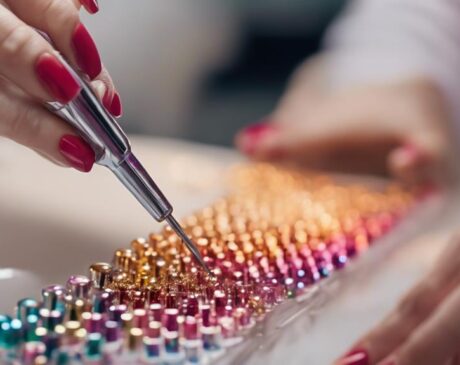What Is the Least Damaging Nail Treatment?
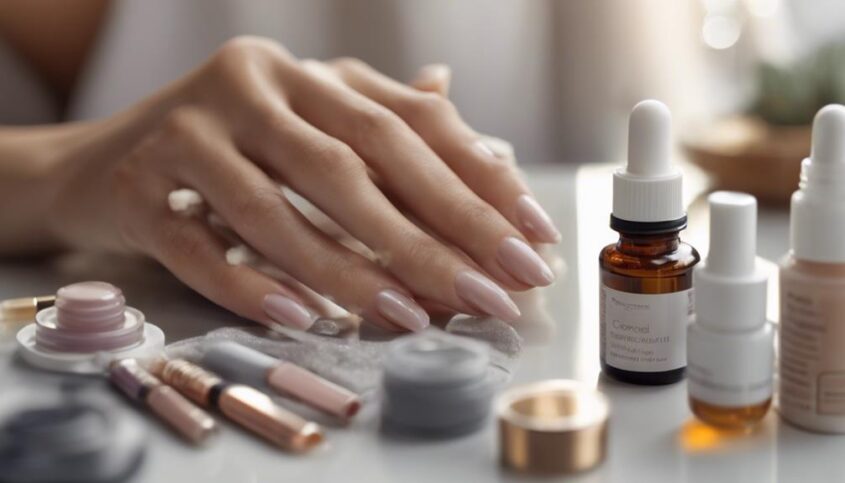
For the least damaging nail treatment, natural nails are the healthiest choice. Natural nails offer unparalleled durability and elegance, with the ability to withstand daily activities. They promote better breathability, reducing the risk of fungal infections. Easy to groom and shape, they suit individual preferences. Opting for natural nails ensures optimal nail health and sustainability. Further details on different nail treatments and tips for healthy nails are available below.
Key Takeaways
- Gel nails are generally considered the least damaging option for natural nails.
- They are lightweight, flexible, and provide a glossy finish lasting up to two weeks.
- Removal process involves soaking with acetone or foil wrap techniques for minimal damage.
- Acrylic nails, while durable, can weaken and damage natural nails more compared to gel nails.
- Dip powder nails offer durability without chipping and a low-damage removal process.
Pros and Cons of Acrylic Nails
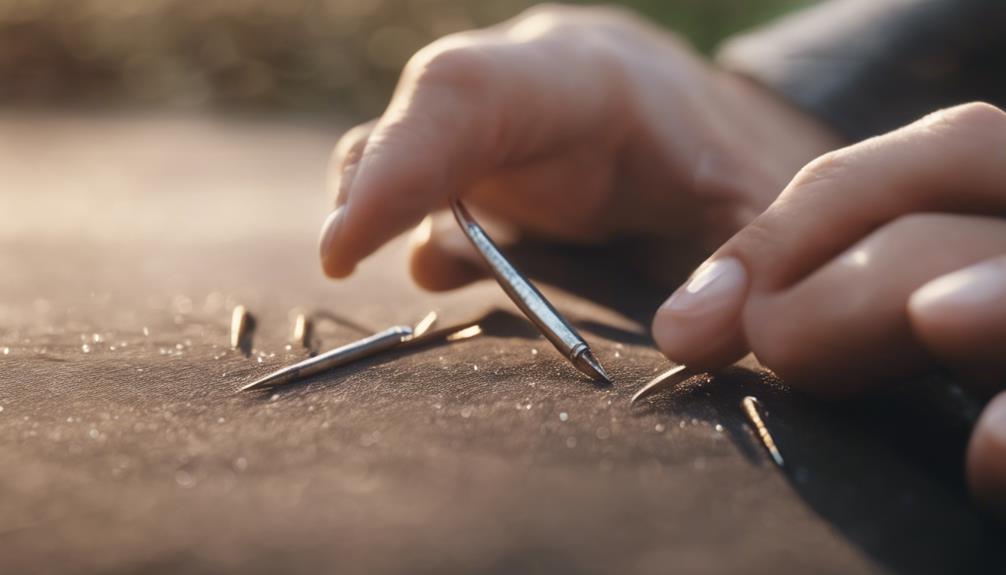
Acrylic nails, a popular nail enhancement technique, offer both advantages and disadvantages to consider when choosing a nail treatment. On the positive side, acrylic nails are known for their durability and strength, making them ideal for individuals with weak or brittle nails. They provide a sturdy extension that can withstand daily activities without chipping or breaking easily. Additionally, acrylic nails offer a versatile canvas for creative nail designs and can be customized with a wide range of colors and finishes to suit every style.
However, there are drawbacks to acrylic nails that should be taken into account. One of the main concerns is the potential damage they can cause to natural nails. The application and removal process of acrylic nails can weaken the nail bed, leading to brittleness and peeling. Moreover, acrylic nails require regular maintenance appointments to fill in gaps as the natural nail grows, adding to the overall cost and time commitment.
When considering acrylic nails as a nail treatment option, it is essential to weigh these pros and cons carefully to make an informed decision that aligns with your nail care needs and preferences.
Understanding Gel Manicures
Gel manicures have become increasingly popular due to their durability and glossy finish. Understanding the differences between gel and acrylic nails, the application process involved, and the various techniques for safe removal are essential aspects to consider when opting for this nail treatment. By exploring these key points, individuals can make informed decisions about the best nail care option for their needs.
Gel Vs. Acrylic
In the realm of nail enhancements, there is a prevalent method that has gained popularity for its durability and natural look: gel manicures. Gel manicures involve applying layers of gel polish to the natural nail, which are then cured under a UV or LED light. Compared to acrylic nails, gel manicures are generally considered to be gentler on the natural nails. Gel manicures offer a lightweight and flexible alternative that provides a glossy finish and can last up to two weeks without chipping. Additionally, gel manicures are known for their quick drying time, making them a convenient option for those with busy schedules. Overall, gel manicures are favored for their natural appearance and long-lasting results.
Application Process
When undergoing a gel manicure, the meticulous application process plays a crucial role in achieving a flawless and long-lasting result. The steps involved in applying gel polish are precise and innovative, ensuring a professional finish that lasts for weeks. Here is a breakdown of the typical gel manicure application process:
| Step | Description |
|---|---|
| 1. Prep | Nail trimming, shaping, and cuticle care |
| 2. Base Coat | Application of a clear base coat for adhesion |
| 3. Color Coat | Layering of the chosen gel color for vibrancy |
| 4. Top Coat | Final sealing with a glossy top coat for durability |
Each step is carefully executed to provide a stylish and enduring gel manicure experience.
Removal Techniques
Exploring effective methods for removing gel manicures is essential for maintaining the health and appearance of nails. When it comes to gel manicure removal, innovation is key to ensuring a damage-free process. Here are three advanced techniques to consider:
- Soaking Method: Submerging nails in acetone to break down the gel polish.
- Foil Wrap Technique: Wrapping each nail with acetone-soaked cotton pads and aluminum foil to speed up the removal process.
- Electric File Approach: Using a gentle electric file to carefully buff off the gel polish without causing harm to the nail bed.
Examining Dip Powder Nails
Examining the application process and durability of dip powder nails provides insights into their potential as a long-lasting and low-damage nail treatment option. Dip powder nails involve a process where the natural nail is prepped, a bonding agent is applied, and the nail is dipped into colored powder. This process is repeated to build layers of color and strength. One key benefit of dip powder nails is their durability. Unlike traditional nail polish, dip powder nails are known to last up to four weeks without chipping. Additionally, dip powder nails are praised for being lightweight and flexible, reducing the likelihood of breakage.
Moreover, dip powder nails are considered low-damage compared to other nail enhancements. The removal process is gentle, involving soaking the nails in acetone rather than filing down the layers, minimizing potential harm to the natural nail. Overall, dip powder nails offer a promising option for individuals seeking a long-lasting and low-damage nail treatment.
Exploring Silk Wrap Nails
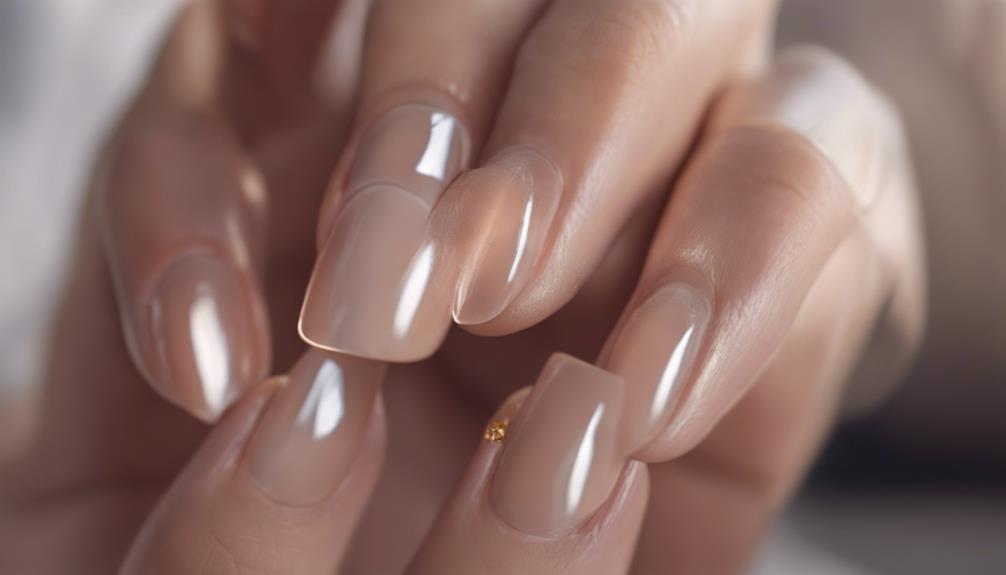
Silk wrap nails are renowned for their strength, offering a durable solution for those looking to protect and strengthen their natural nails. The application process of silk wraps is straightforward, making it a convenient choice for both professionals and DIY enthusiasts. Furthermore, these wraps provide a protective layer that helps safeguard the natural nail, promoting healthier and more resilient nails over time.
Strength of Silk Wraps
Studying the durability and resilience of silk wraps in nail treatments reveals their potential as a reliable and long-lasting option for maintaining nail health. Silk wraps offer a unique combination of strength and flexibility that makes them stand out in the realm of nail treatments. Here are three key points to consider:
- Enhanced Nail Strength: Silk wraps provide added strength to natural nails, reducing the risk of breakage and promoting healthier nail growth.
- Longevity: Silk wraps have a longer lifespan compared to other nail treatments, maintaining their integrity for an extended period.
- Natural Look: Silk wraps blend seamlessly with natural nails, offering a polished and elegant appearance without compromising on durability.
Application Process Simplicity
In exploring the application process of silk wrap nails, one can appreciate the simplicity and efficiency that this nail treatment offers for maintaining nail health and aesthetics. Silk wrap nails involve the use of a silk or fiberglass fabric that is cut to the desired size and shape, applied to the nail using resin or glue, and then sealed with a topcoat for a natural look. This process is not only straightforward but also helps in reinforcing and protecting the natural nail underneath. Below is a table highlighting the key steps in the application process of silk wrap nails:
| Step | Description | Benefits |
|---|---|---|
| 1 | Cut silk fabric | Customizable |
| 2 | Apply resin/glue | Secure adhesion |
| 3 | Seal with topcoat | Natural appearance |
Natural Nail Protection
To enhance the durability and strength of nails while maintaining their natural appearance, silk wrap nails provide an effective solution for natural nail protection. Silk wrap nails offer numerous benefits for those seeking to protect their natural nails while adding a touch of elegance. Here are three key advantages of silk wrap nails:
- Natural Look: Silk wrap nails blend seamlessly with your natural nails, providing a subtle and authentic appearance.
- Strength Enhancement: The silk material adds strength to your nails, reducing the risk of breakage and promoting healthier nail growth.
- Breathability: Silk wrap nails allow your natural nails to breathe, preventing moisture buildup and potential damage.
Benefits of Natural Nails
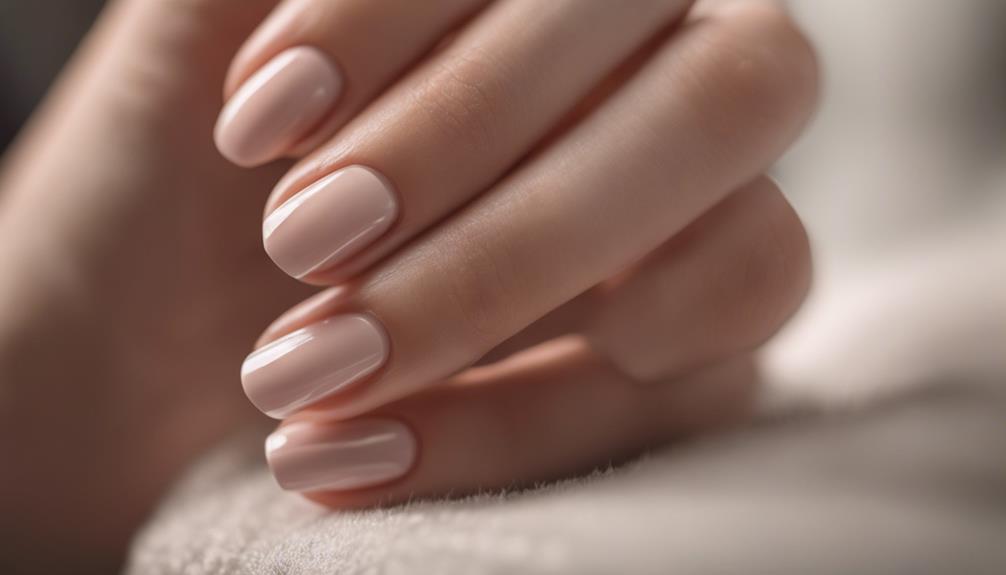
Natural nails offer unparalleled durability and elegance, making them a preferred choice for those seeking long-lasting beauty solutions. One of the key benefits of natural nails is their ability to withstand everyday activities without easily breaking or chipping. Unlike artificial nails, natural nails are flexible and less prone to damage, providing a more sustainable option for maintaining a polished look.
Additionally, natural nails allow for better breathability, reducing the risk of fungal infections that can occur with prolonged use of artificial nails. This breathability also helps in maintaining the overall health of the nails, preventing issues like yellowing or weakening.
Furthermore, natural nails can be easily groomed and shaped to suit individual preferences, offering a versatile canvas for different nail art designs. Their natural texture and appearance provide a timeless elegance that is hard to replicate with artificial enhancements.
Tips for Healthy Nail Extensions
For optimal nail health and longevity while using extensions, it is essential to follow specific tips and practices to ensure the well-being of your natural nails.
- Choose high-quality materials: Opt for nail extensions made from reputable brands that prioritize the health of your nails. Quality materials can make a significant difference in how your nails look and feel.
- Regular maintenance: Schedule routine maintenance appointments to keep your nail extensions in top condition. This will help prevent any lifting or damage that could occur if the extensions are left unattended for too long.
- Moisturize and nourish: Keep your natural nails and cuticles hydrated by regularly applying nourishing oils or creams. This will help prevent dryness and brittleness, maintaining the health of your nails underneath the extensions.
Comparing Press-On Nails
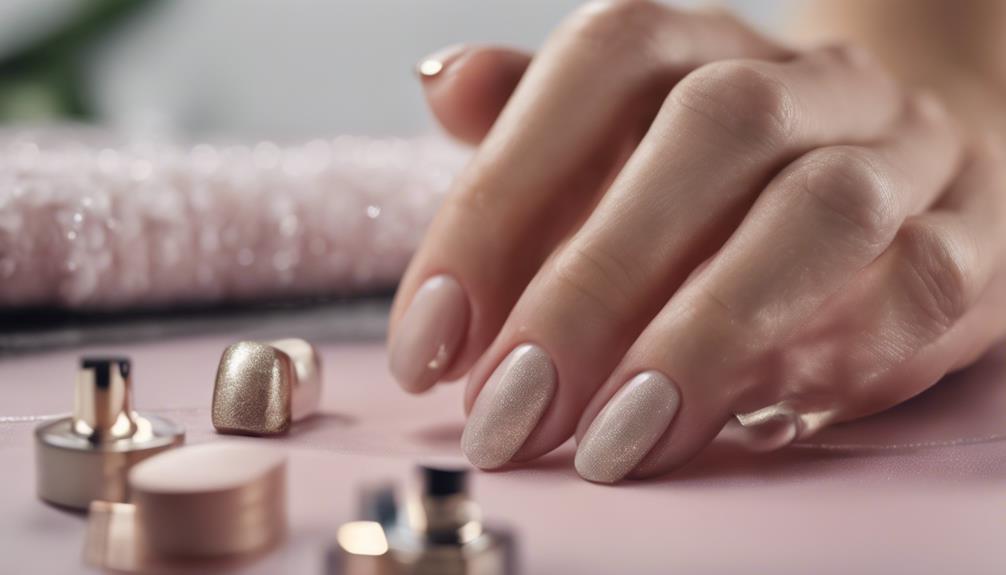
When exploring nail enhancement options, a comparison of the benefits and drawbacks of various press-on nail products can assist individuals in making informed decisions regarding their nail care routine. Press-on nails have evolved significantly, offering a convenient and quick solution for those seeking temporary nail enhancements. One of the primary advantages of press-on nails is their ease of application, allowing for a hassle-free at-home manicure. Additionally, these nails come in a wide range of designs, colors, and shapes, catering to diverse preferences and trends in the beauty industry.
However, some drawbacks of press-on nails include the potential for them to pop off or lift if not applied correctly or if exposed to water frequently. Furthermore, the longevity of press-on nails can vary depending on the brand and quality of the adhesive used. It's essential to carefully follow the application instructions and consider touch-ups to maintain the integrity of the nail look. Ultimately, when choosing press-on nails, individuals should weigh the convenience and variety they offer against the potential maintenance required to keep them looking fresh and intact.
DIY Nail Care Techniques
Exploring cost-effective and efficient methods for maintaining healthy nails can enhance one's overall nail care routine. DIY nail care techniques offer a personalized approach that can be both beneficial and enjoyable. Here are three innovative methods to consider:
- Oil Treatment: Using natural oils like coconut, jojoba, or almond oil can help nourish and strengthen nails. Massaging a small amount of oil into the nails and cuticles regularly can improve moisture levels and promote healthy growth.
- DIY Nail Soaks: Creating your own nail soak using ingredients like lemon juice, honey, or tea tree oil can help cleanse, hydrate, and protect nails. Soaking your nails in a mixture of warm water and these ingredients can provide a relaxing and rejuvenating experience.
- Homemade Nail Masks: Making a DIY nail mask using ingredients such as mashed avocado, yogurt, or oatmeal can help repair damaged nails and improve overall nail health. Applying the mask to nails and leaving it on for a few minutes before rinsing off can provide essential nutrients and hydration.
Frequently Asked Questions
Can Natural Nails Be Used as a Base for Nail Extensions?
Yes, natural nails can serve as a suitable base for nail extensions, provided they are healthy and strong. Prepping the nails properly and using quality products can help ensure a successful and long-lasting nail extension application.
How Long Do Press-On Nails Typically Last Compared to Other Nail Treatments?
Press-on nails typically last 1-2 weeks, offering a temporary nail enhancement option. Compared to other treatments like acrylics or gels, which can last 2-3 weeks, press-ons provide a convenient, quick-change solution without long-term commitment.
Are There Any Potential Health Risks Associated With DIY Nail Care Techniques?
While DIY nail care techniques offer convenience, improper practices can lead to health risks such as nail infections, skin irritation, and chemical exposure. It is crucial to follow proper hygiene, use quality products, and seek professional advice when needed.
What Is the Average Cost of Maintaining Silk Wrap Nails Compared to Other Nail Treatments?
Amidst the array of nail treatments, silk wraps offer a delicate balance of elegance and durability. The average cost of maintaining silk wrap nails may vary depending on the salon, ranging from $30 to $60, offering a chic yet affordable option for nail aficionados.
How Do Dip Powder Nails Differ From Traditional Acrylic or Gel Manicures in Terms of Application and Removal Process?
Dip powder nails offer a unique application process by dipping nails into colored powder, eliminating the need for UV light. Removal involves soaking, reducing damage to the natural nail compared to traditional acrylic or gel manicures.


